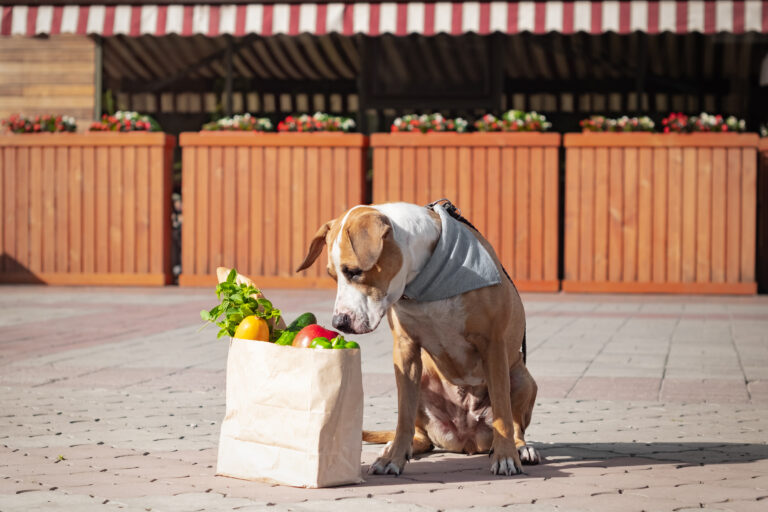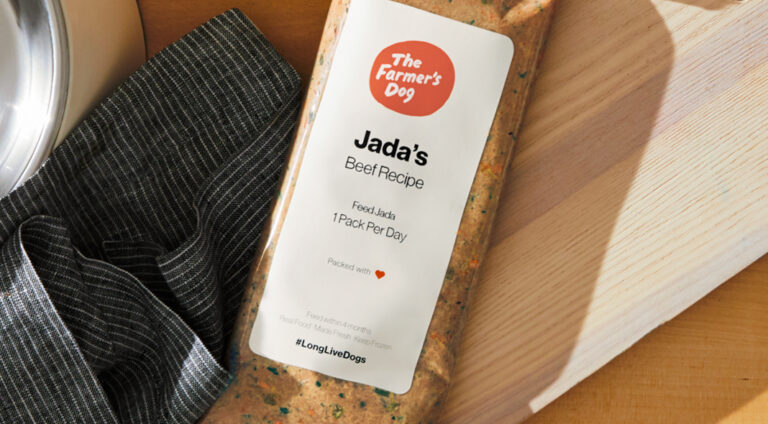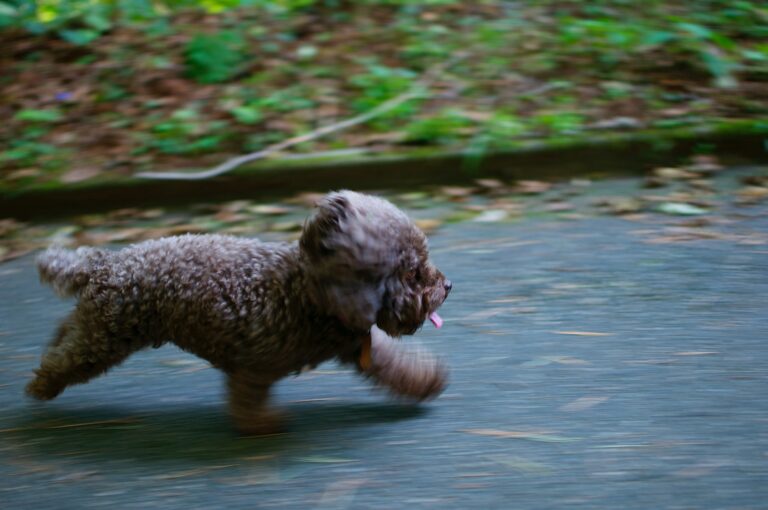If you’re using the occasion of a fresh new year to make some health-forward lifestyle changes, consider bringing your dog along for the ride.
Perhaps your pup is in need of a reset or help with a particular ailment—they might be overweight or struggling with a behavioral issue. The new year provides just the clean slate you may need to tackle an ongoing problem. But even dogs who look and seem perfectly fine can reap benefits from small tweaks. A bit more time outside, a little more healthy, fresh food, and other small changes can make a difference to any dog’s mental and physical well-being, and can give you a better chance of ringing in more happy new years together.
If you’re looking for a place to start, here are five simple but impactful new habits you can work into your new-year plan.
Swap out (some) processed food for fresh
If you’ve got a new year/new you to-do list, put diet at the top.
We’re learning more every day about the powerful effect diet has on all facets of our physical and mental health. And there’s an expanding body of research suggesting that the same benefits humans get from good nutrition also apply to dogs. For a fresh start to the year, look for ways to switch out the heavily processed foods in your dog’s daily diet for fresh alternatives.
Here are some tips for simple swaps:
Switch from kibble to fresh food! There’s no denying (bias alert!) that we have a strong point of view on canine nutrition: we, and a growing number of veterinary professionals think that a daily diet of dry, ultra-processed pet food is a drain on your dog’s good health. Signing up for a fresh-food plan is a turnkey nutrition upgrade for your pup. You provide info about your dog’s age, breed, weight, activity level and more, and you get precisely portioned, complete and balanced, whole food sent to your door.
Make smaller swaps: One good thing about good food is that incorporating even a small amount into your dog’s diet can make a difference. If you feed kibble or canned food, try topping your dog’s daily meal with fresh foods like small pieces of steamed veggies, a few berries, some plain, pureed pumpkin, or unseasoned meat (cook through according to food safety guidelines, but avoid super high heat and charring!). Keep this top-up to no more than 10% of their daily intake. By incorporating this small amount of fresh, whole food, you’re providing a health boost while ensuring your dog’s diet stays balanced and they’re not risking weight gain.
If your dog enjoys these fresh additions, consider upping the ante and swapping out 25% or half of their processed food for fresh food. You can incorporate fresh food into each meal, or swap out a certain number of meals per week. Make sure you’re swapping in complete and balanced fresh food, and phase it in slowly to give their tummy time to adjust.
Trade treats: No matter what daily diet you feed your dog, extra calories and toxins can sneak in via ultra-processed treats. Though small, many packaged treats are calorie-dense and heavily processed, and as such they can add up to one big factor in undermining your dog’s health. Try small pieces of fruit or vegetables instead. Think of each treat as an opportunity to introduce powerful, digestible nutrients to your dog’s system. Some excellent treat ideas: bite-sized pieces of apple or pear, or a few blueberries. Or consider small chunks of steamed carrot, broccoli, or some green beans.
These are all foods that are chock full of nutrients that fight inflammation and fuel immunity. Experiment to see what your dog likes, introduce slowly, and feed in small amounts!
Get precise about portions
Fresh, minimally processed food is a key ingredient in your dog’s good health. But along with quality, feeding your dog the right quantity of food is critical.
The majority of dogs in the U.S.— 56%—are overweight or obese, and that extra weight brings significant health consequences. Many veterinary experts call obesity our pets’ biggest health threat, as it’s linked to a whole raft of health problems including arthritis, chronic kidney disease, bladder/urinary tract disease, liver disease, diabetes, heart failure, high blood pressure, and cancer. Many pet owners, however, may not realize there’s a problem, as it doesn’t take a ton of extra weight for the negative effects to start showing up. While we tend to think of “a few pounds” in human terms—no big deal—for a dog, those few pounds can be a health hazard.
When the margin of good health might be only five or six pounds (and far less on a small dog), portion accuracy is everything. And to get accurate, you need to know how many calories your dog really needs each day.
If you’re a current or former kibble-feeder, you may have only ever measured your dog’s meals in scoops or cups. But the guidelines found on kibble bags are too vague and don’t take into account your dog’s unique needs. In addition to weight, there are many factors that will influence your dog’s dietary requirements, including breed, age, activity level, and whether they’re spayed or neutered. Standard kibble-bag feeding ranges don’t take these important factors into account and many owners end up over-feeding based on too-generous suggested portion sizes.
Signing up for a fresh-food plan makes it easy to determine the correct total caloric intake and food portions based on your dog’s very specific requirements, and also makes it easy to adjust daily calories based on changing weight-management needs.
If you’re not feeding pre-portioned fresh food, there are many tools online to provide rough feeding guidelines based on weight and breed (you might start by consulting the guide published by the Association for Pet Obesity Prevention). These tools provide an estimate, but every dog’s metabolism is different—so be sure to keep monitoring your pet’s weight, and speak to your veterinarian about your dog’s requirements.
Test your dog’s body condition
We’ll risk being repetitive because it’s that vital: weight management is an important—and accessible—way to safeguard your dog’s long-term health.
It’s a good idea to monitor your dog’s weight, checking it regularly during vet visits and ensuring that it stays within the healthy parameters for your dog’s breed, size, and age. But there’s also a test you can do at home to keep track of how lean or fat your dog is. Veterinarians assess your dog’s body condition by sight and touch using something called a Body Condition Score. Using a 1-5 or 1-9-point scale that ranges from too-skinny (1) to obese (9), they will determine whether your dog needs to lose, maintain, or gain weight. You can do this body condition test yourself, and it’s an ideal healthy habit to get into.
To do the test at home, simply look at and feel your dog’s ribs, belly, and waist.
-If you can clearly see all their ribs, they’re too lean.
-If you can easily feel, but not see, their ribs—and they have a “waist” and abdominal tuck—they’re at an ideal body condition.
-If you can’t feel their ribs due to a layer of fat, and they have a barrel shape, they are too heavy.
See a video demonstration below.
Add an hour of exercise a week
There are few areas of our lives and our health that aren’t improved by physical activity.
And, like so many things, the benefits apply equally to dogs and humans. Done mindfully, daily exercise can assist in weight management, help prevent an array of ailments, and alleviate stress in dogs.
Conventional wisdom holds that dogs should get a minimum of 20 to 30 minutes per day, but most dogs could benefit from more—and more intense—exercise.
So, if you’re looking to acquire a healthy habit for yourself and your dog this year, make it “move more.” For a healthy, adult dog (speak to your vet before starting any new exercise plan) aim for at least one hour per day of exercise. And if your dog is already getting about an hour of walking a day, aim to add at least an hour of an activity that introduces some running or jumping.
Some tips to add extra exercise:
Up the pace and/or distance on walks: Sniffing around is good for dogs; it provides important mental stimulation. But walks are also a key form of physical exercise, so make the most of their cardio benefits by maintaining a brisk pace for a full 20 minutes before allowing a sniff break as a “reward.”
Make fetch happen: If you have a yard, a daily game of fetch with a tennis ball is a no-brainer. If you don’t have outdoor space, some hallway fetch can provide an accessible form of fun exercise (carpeted floors or other non-slippery surfaces and understanding neighbors are key).
Backyard agility: Set up your own improvised “agility-light” course—use pylons or garbage cans to create obstacles for your dog to move around. Set up low “hurdles” that they can walk or jump over.
Tug, mindfully: You don’t need a lot of space for a game of tug, which has the added benefit of providing both you and your dog with a burst of good exercise in a short amount of time. Just make sure to play this game on your terms. Have your dog sit or “go to place” before beginning the game—and when you say so, make sure they release the tug. The reward is the dog gets to re-engage and start the game again.
Make training a daily habit
If some form of training is part of your own new year plan, don’t forget to include your dog! January just so happens to be National Train Your Dog Month, but any month is a good time to start adding more training to your dog’s daily routine.
Mental exercise is crucial for dogs—it can actually burn as much of your pup’s energy as physical exertion, and has tons of other behavioral benefits. And while there are many ways to provide mental engagement—ensure they get ample sniffing opportunities on walks, and play “nose games” at home—training is a true win-win, with benefits accruing to your dog and to you (and everyone else your dog encounters on any given day). Here are a few hints to help develop a healthy training habit.
Turn everyday actions into teachable moments: If your dog typically barks or lunges when the doorbell rings, practice having them sit instead. Your new habit could even be as simple as practicing having them wait for a cue before diving into their food bowl or sitting calmly when you’re putting their leash on before walks.
Pick an “aspirational” skill and work on mastering it: Have you ever looked on in awe as a dog on the street responds to their owner’s request to “leave it” or “come” when confronted with an irresistible temptation? Well, the new year is a great time to finally conquer a big new skill. Recall and “leave it” are among the most useful commands—and while teaching them can seem insurmountable, all it requires is patience and daily practice. Start small, and in a controlled environment, gradually ramping up the distraction level. Read more about teaching “leave it” here.
The great thing about working in more training is that you can do it anywhere, and it doesn’t require a huge time commitment. In fact, keeping training sessions short—think 5-10 minutes each—keeps your dog excited and engaged. Any time you can spend on training is an investment that pays off in a happier dog and a better dog-human relationship. And any extra time you can mindfully spend with your dog will mean a happier year for both of you!












